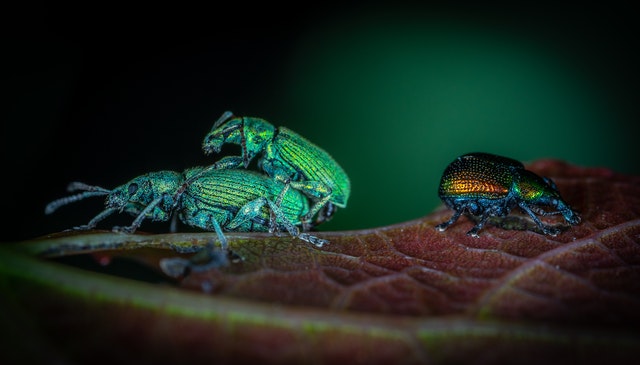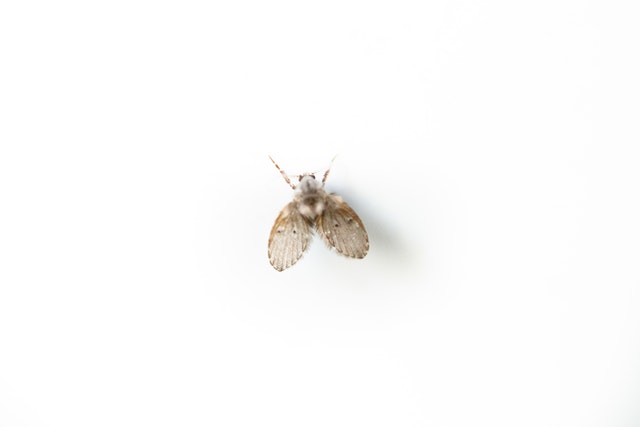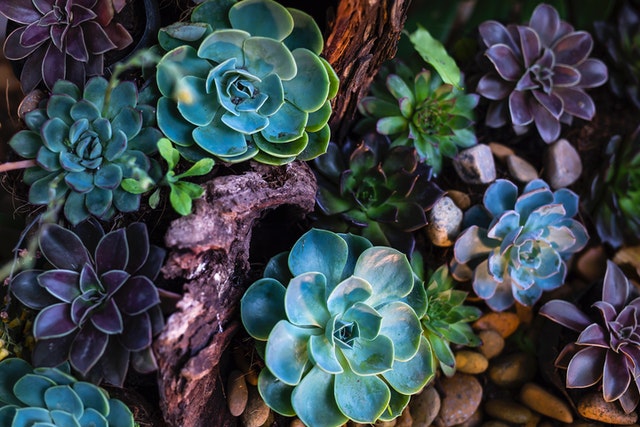Beautiful, hardy, and often conveniently sized, succulents are popular because they require comparatively little care. However, if you’re wondering whether there are any disadvantages to owning a succulent, one of the questions that might come up is: do succulents attract bugs?
With their delicate foliage, vibrant colors and low maintenance requirements, succulents are a popular choice for any garden – but it’s important to be aware of the potential issues that can arise, such as whether they attract bugs.
Succulents do attract microscopic bugs which are attracted to the large amounts of water in succulent plants. These include mealybugs, scale bugs, spider mites, and gnats.
If you’re worried about your succulent attracting bugs, remember that we have gardening tips to keep you up to date on pest control! In this article we’ll cover the reasons bugs are attracted to succulents and cover some frequently asked questions so that you can be sure of the answer to the question, do succulents attract bugs?
Do Succulents Attract Bugs?

Succulents do attract bugs! You may be expecting to see the usual plant-swarming suspects, such as house flies or fruit flies, but actually, this is not often the case.
You see, succulents are pretty resilient plants, having originated in dry deserts. In their natural environment, succulents contain so much water on the inside while developing a hardy flesh on the outside that the typical pests are not interested in hovering nearby. Succulents don’t offer much for the average beetle or fly to sink their little mouths into.
Unfortunately, that does not mean that succulents are totally immune to having bug visitors.
As special as succulents are to their owners, they are even more special to certain bugs. Mealybugs, scale bugs, spider mites, and gnats are the most common plague to succulents. This is because these insects have needs unique to other pests, and succulents have properties that meet these needs.
If you’re concerned about the presence of pests on your succulent, you might need to break out a microscope! Each of these common plagues on succulents are very tiny. Look out for black dots, white fuzz, or tiny red speckles on your plant friends. These are actually pests that don’t fit the usual description of bugs you expect to fend off on other types of plant life.
Reasons Why Succulents Attract Bugs
A succulent attracts certain types of bugs for a variety of reasons. Check out the list below to see why insects love your succulent!
- Mealy Bugs Love the Water Inside Succulents
- Scale Bugs Love the Sap Inside Succulents
- Spider Mites Drain Succulents
- Gnats Are After Succulents’ Water
- Mealy Bugs Love the Water Inside Succulents
1. Mealy Bugs

If you’ve noticed that white fuzz we were mentioning above, you have spotted the first type of pest that can plague your succulent: mealy bugs.
Mealy bugs aren’t the nastiest-looking insects, being incredibly small and resembling furry crabs. As nonthreatening as they may seem, a mealybug can cause damage to succulents.
Mealybugs live their whole life span on a succulent and usually lay up to six hundred eggs so their family can share in the water supply your succulent supplies. That many mealybugs can make short work of your poor succulent by drinking all of the water the plant holds.
2. Scale Bugs Love the Sap Inside Succulents
A scale bug is a tiny, black, firm-bodied shell of a bug. There are actually two different breeds: the armored scale insect and the soft scale insect. Both will be attracted to succulents.
The reason a scale bug of either type spends its time hanging out around your succulent plant is because they like to consume the sap that a succulent produces.
According to Succulents and Sunshine, succulents contain sap like cactus milk, and scale bugs love the glucose content inside. They have mouths specifically made for piercing the hide of a succulent and draining its sap.
What’s worse, these particular pests are known for multiplying quickly and then being too resilient to get rid of using normal means. Often, you’ll have to remove the whole leaf of the succulent that the scale are feeding on to be free of them!
3. Spider Mites Drain Succulents
Scale bugs are not the only type of pest that love the cactus-milk sap of a succulent. If you have noticed red speckles on your succulent, you have excellent eyesight! Spider mites are so small they are nearly invisible to the human eye, but their bright color can give them away against the pale cooler tones of your plant.
That, and the tiny white webs that spider mites construct around the plants they inhabit.
Spider mites are a lot like little vampires. Similarly to scale bugs, a spider mite will drain the sap out of a succulent. The difference is, your poor succulent will suffer from a red spot on its flesh even after you get rid of the mite.
4. Gnats Are After Succulents’ Water

Gnats aren’t like the other three pests common to succulents because they don’t actually care about the plant itself. While a spider mite and a scale bug are in it for the sap, and a mealy bug wants the water stored inside your succulent, a gnat often won’t bother the plant itself.
Instead, gnats are interested in the water you are giving to your succulent through the soil. A gnat’s main villainous quality is it’s sheer ability to annoy! If you have a whole terrarium full of succulents, gnats will hang around and make an unpleasant, buggy scene waiting for you to water them.
Also read: Can Deer Eat Bread
Summary
In summary, we are not the only creatures on this planet who love succulents for their hardy, water-storing nature. While other bugs may be disinterested in succulents, a few tiny ones go wild for the sugary sap and water the plants contain.
If you notice white fuzz, dark splotches, or tiny red speckles on your succulent, you’ll know that some of these particular bugs have come to get the moisture they can. Mealy bugs, scale bugs, and spider mites are harmful to the plant, while gnats are just plain irritating. Be sure to take action against them before your succulent winds up thirsty or damaged!
Frequently Asked Questions
How do I Keep Bugs Out of My Indoor Succulents?
Succulents store moisture inside of them, and as a result, they don’t need to be watered often. In fact, an excess of moisture from overwatering is what causes gnats to gather around succulents.
Though getting rid of gnats is as easy as making sure the surrounding soil isn’t watered, the other bugs that are attracted to indoor succulents are a little harder to be rid of. Spider mites construct webs on succulents, so the best thing to do to them is to remove their webs when you spot them.
Scale bugs, on the other hand, are very hardy and tough to remove: usually, if you notice them, you’ll need to cut the leaf or stem they’ve set up shop on completely off.
It’s nearly impossible to keep bugs from noticing your indoor succulents, but with these methods, you can at least keep them out of the plants!
Do Succulents Have Bugs?
The best way to tell if succulents have bugs is to look for any sort of discoloration on the plant itself. Usually, the types of bugs that attract succulents are very small. Some, like the spider mite, are nearly invisible to the naked eye.
Look for any black spots or specks on your succulent plant. If there are clusters of them on one particular leaf, you have probably found a scale bug infestation. If the spots aren’t clustered, but floating around the soil, you’ve overwatered your succulent enough to attract the attention of gnats.
If you notice a white fuzz, you’ve either identified the mealy bugs or the webs of spider mites.
Do Succulents Attract House Flies?
Succulents that are alive and well do not attract house flies at all. House flies aren’t interested in the particular desert breed of plant succulents. However, if your succulent is dying or dead, that is a different story.
House flies love to find abandoned, decaying organic material to feed on and breed in. Make sure your succulent is healthy and thriving, and you won’t have to worry about blaming them for your possible house fly problem.

Hey, I’m Lisa and I’ve been an avid gardener for over 30 years. I love writing, talking and living in the garden! Feel free to connect with me on my socials below

